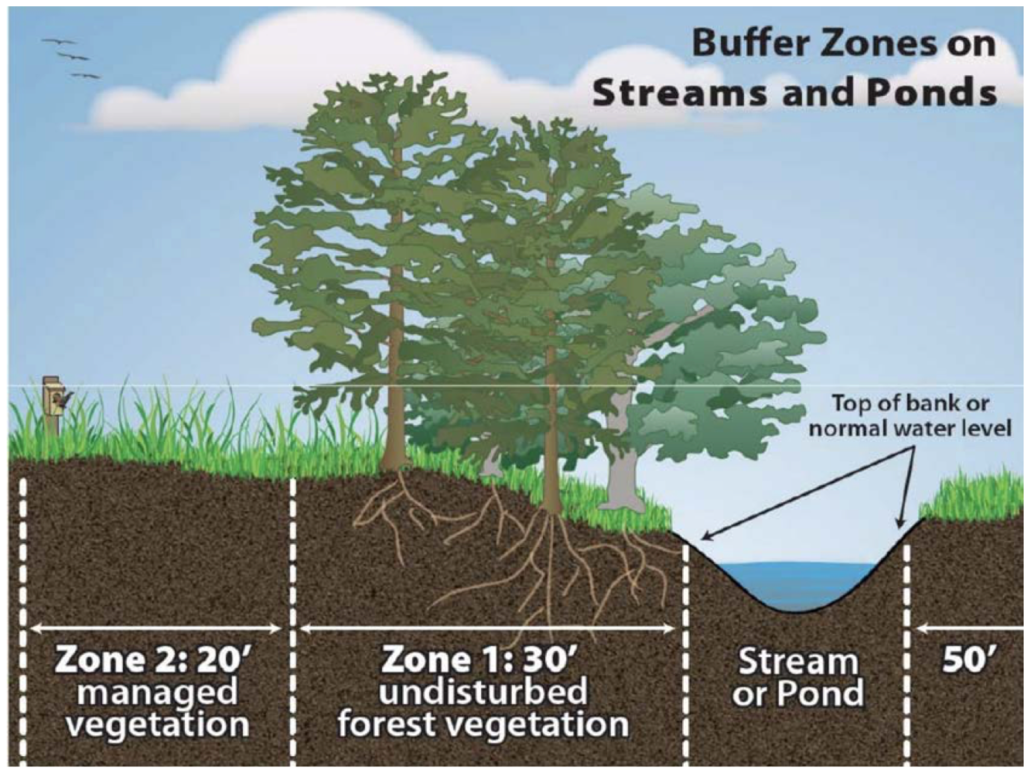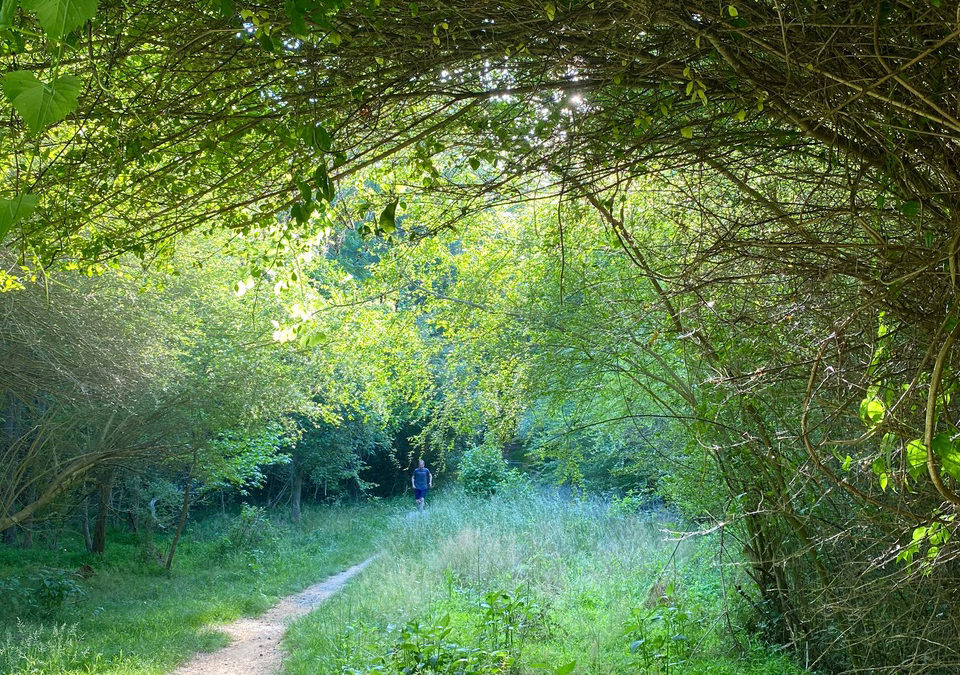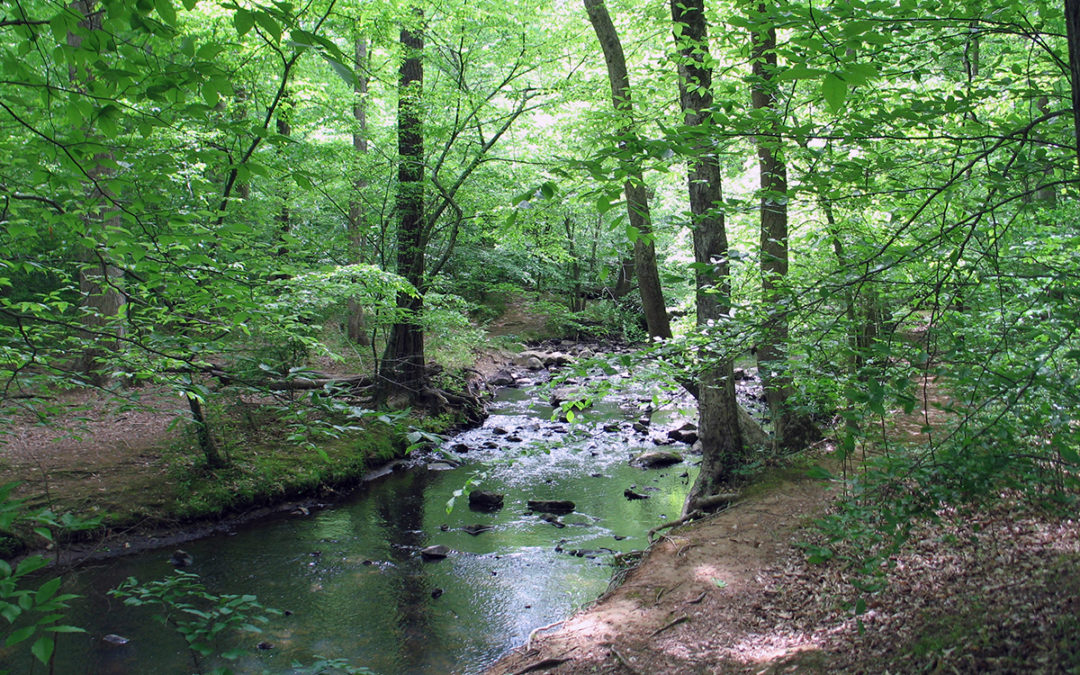
WRAL-TV: Flash Flood Warnings create problems around the Triangle
Umstead Park and other areas were affected by severe weather Friday evening.

Umstead Park and other areas were affected by severe weather Friday evening.

Greenways are great in the right places. There is a big caveat. Pavement does not belong in riparian zones next to a creek. What is a riparian zone? See diagram below.
The 2009 Bolin Creek Greenway Conceptual Master Plan favored the creekside route before an engineering study was conducted. This proposed alignment would run for approximately two miles of trail in the riparian zone next to Bolin Creek, extending from Estes Drive Extension to Homestead Road and take out all the trees and tree roots in its path in the midst of a 425 acre forest. When tree canopy is removed next to a creek, water temperatures rise, and animal and insect populations decline along with water quality.
There are a number of alternative options to the proposed creekside route:
Many existing trails and off road bikeways are already available for recreation and some for transportation. Some are in the planning stages.
View this map of the many trails in the Upper Bolin Creek Watershed.
Why oppose the Carrboro Council’s current approach to identifying new greenway routes?


As I drove home from Raleigh yesterday, I looked at my car’s thermometer, it read 95 degrees. I could feel the heat island just 30 minutes earlier on my run with a friend. The hot pavement of the parking lot reflected the heat back to us as we drank our post run hydration. We huddled under one tiny lone tree, trying to stay out of the sun while we chatted about future adventures and thought about the nice cool shower that awaited us at home.
While I was thinking about our climate change here in NC, a friend called to tell me about her run. She lives in VT and while its cooler there, they are experiencing thick smoke from the fires in Canada and she felt like her hike was maybe not a good idea. Inhaling small particles from forest fire smoke can cause all sorts of health problems for folks. From all signs, VT may face heavy smoke all summer, despite none of their forests being on fire. This is climate change for Vermonters.
On the Outer Banks, for example in Rodanthe, $30 million in restoration has been occurring to keep the tides from swallowing up homes. Stll $30 million cannot protect homes from climate change, as they lose up to 12 ft of coastline a year, and recently 4 homes.
I drove into Carrboro, my car’s thermometer registered a temperature of 88, much cooler than Raleigh’s urban heat island. https://en.wikipedia.org/wiki/Urban_heat_island
I thought to myself, thank goodness Carrboro is cooler, for now. Currently our dense forested areas like Carolina North, the Greene tract and fewer paved surfaces keep us cooler than Cary, Durham or Raleigh, but that is changing, and fast.
While places like VT or CA are facing smoke from fires, our current climate crisis is cutting trees, and paving surfaces leading to higher heat islands and faster, more powerful flooding events with each rainstorm. Trees and pervious surfaces, like dirt or forest floors, natural grasslands and vegetation slow storm water and filter it before it hits our streams and rivers. As our small town keeps voting for more dense neighborhoods, cutting trees and paving more wooded areas we expedite our climate crisis with each new development, each new section of forest cut.
No place remains unchanged, but our small town can be smarter about what types of construction we allow, what types of homes we build and how we mitigate stormwater erosion. We can never build enough homes, it’s in the same vein of building more and more highway lanes. Studies have shown that every time you build a new highway lane, more people just come and fill it up. Our current housing dilemma is in parallel. One small town cannot solve these larger problems, throwing dense housing at the problem will only create bigger problems in the near future. Building dense housing without smart, deliberate thought is not the right response to climate change as we are currently struggling with stormwater issues; nearly every neighborhood in town has at least one home that regularly floods or is dealing with mold from a constantly wet crawl space.
While asking people to bike more is helpful it’s like putting chewing gum in a crack in a dam. It doesn’t account for people who live in the county that work at UNC or the hospital, they will still need to drive to work and park. It doesn’t account for the parents that take their kids to soccer practice, while dropping another at music lessons and trying to zip to the store to grab food for dinner. It does not account for people who cannot ride for physical reasons, or who work multiple jobs and don’t have an extra hour to bike-commute. It also doesn’t take climate change into account and biking when the heat index is over 90 can be serious for people who are not accustomed to strenuous work in hot environments. As an extreme athlete I have seen firsthand that heat stroke is serious and can happen in circumstances that you don’t expect.
Expecting everyone to bike and not drive also puts a strain on our local small businesses that rely on events like parents week, Mother’s Day, sports events and summer to encourage tourists and out of town folks to patronize their businesses. People come into town to visit their kids at school, or just to see the town and they won’t be biking as many live out of state. Without ample parking for the business our cute local downtown will not continue to thrive.
In many ways it is also elitist and leads to gentrification, which makes affording to live in Carrboro even more out of reach for people.
https://www.pnas.org/doi/abs/10.1073/pnas.1920490117
The Carrboro Town Council has heard about this from the local Black community in several Tuesday night meetings.
Instead, the biggest pro-climate thing we can do in this town is keep pushing for the closing of the UNC coal plant. From digging coal out of the mountains in West Virginia, to burning coal 2 miles from our homes, to disposing of the coal ash; it’s the antithesis of climate forward thinking.
A 2019 report indicated the plant releases four to six times the legal limit of nitrogen oxide and sulfur dioxide gas allowed by the Clean Air Act, which is one of several reasons why groups like the Center for Biological Diversity, the Sierra Club and the Town of Carrboro are suing the Environmental Protection Agency over their permit for the plant.
https://www.dailytarheel.com/article/2022/09/opinion-get-rid-of-chapel-hill-coal-plant
https://indyweek.com/news/orange/unc-chapel-hill-cogeneration-plant-lawsuit-permit/
With the closing of the plant, there have been plans to turn the railway into a rails to trail bike path. This would essentially connect UNC, through Carrboro and its business district, through many of the apartments, in town, up to Smith Middle School and Chapel Hill High School, north by Chapel Hill transit, where there are many park and ride lots, past New Hope Market all the way to Brumley Preserve and only a few short miles to the MST by the Eno. It would also connect with Chapel Hill’s future Estes extension bike route, then connecting into Chapel Hill.
It makes arguing over 2 miles of a floodplain seem not even worthwhile. Instead of connecting Carrboro’s wealthiest neighborhoods, the rails to trail would actually be a real transportation corridor. We could keep our carbon capture/cooler air/natural forest for birds, owls, salamanders, frogs and other woodland creatures and create a real transportation corridor that would be for everyone.
By Fair Oaks Resident


I would like to point out something: THERE ARE PRACTICAL ALTERNATIVES to paving along Bolin Creek. This is what I think is so crazy. There exist possible paths that Friends of Bolin Creek and myself have been pointing out for years to accomplish this. Damon Seils and Sammy Slade and Mark Chilton have all refused to consider these alternatives.
Yet we could create a network of bike paths independent of roads and safe for everyone and more affordable. Importantly, this means the SEAWELL SCHOOL SIDEPATH, which has been one of Carrboro’s priorities on the Metropolitan Planning Organization’s list for Durham and Orange Counties. This is a very viable route that can connect Carrboro to Chapel Hill, achieving the same objective of moving people around our towns, whether for recreation or shopping.
And we can do this all without paving our riparian areas.
It is insane that the Carrboro Town Council recently manipulated a community process about Bolin Creek, saying that it was only going to consider a paved creek-side route, which the consultant said was the preferred route in 2009. Has nothing happened in the world in the last 14 years?
What kind of leadership is this?
Rob Crook is a long-time forester and expert on urban forests. He has served on Carrboro’s Environmental Advisory Board and its Greenway Commission. He believes we can have a better vision for our future than deciding to pave over all the riparian zones along our creeks.

I would say to anyone who says a paved path along Bolin Creek is going to improve water quality, you are mistaken. The path along Bolin Creek in Chapel Hill has been there since I moved to town in the early 1990’s. This section of the creek is still listed as a 303d impaired stream, defined by the Clean Water Act of 1972. So, paving along Bolin Creek in Chapel Hill has not improved water quality.
Rob Crook is a long-time forester and expert on urban forests. He has served on Carrboro’s Environmental Advisory Board and its Greenway Commission. He believes we can have a better vision for our future than deciding to pave over all the riparian zones along our creeks.